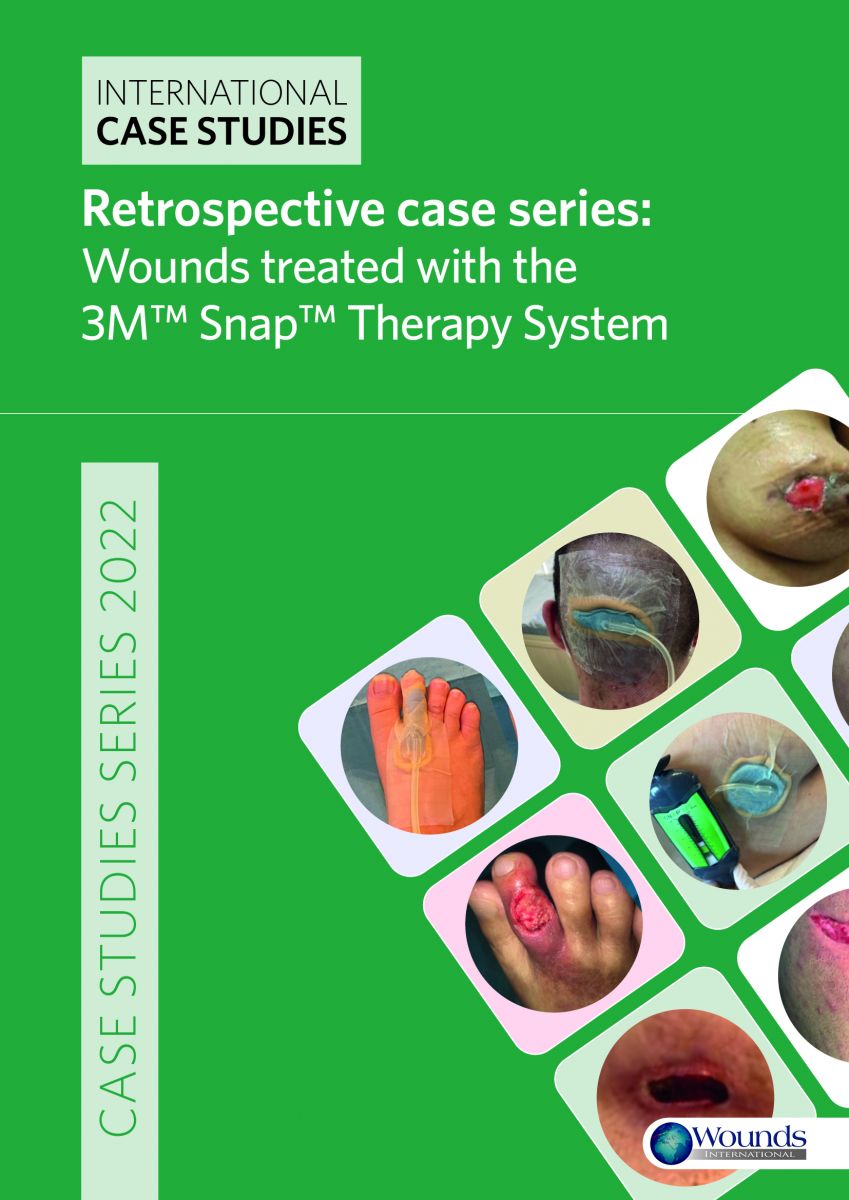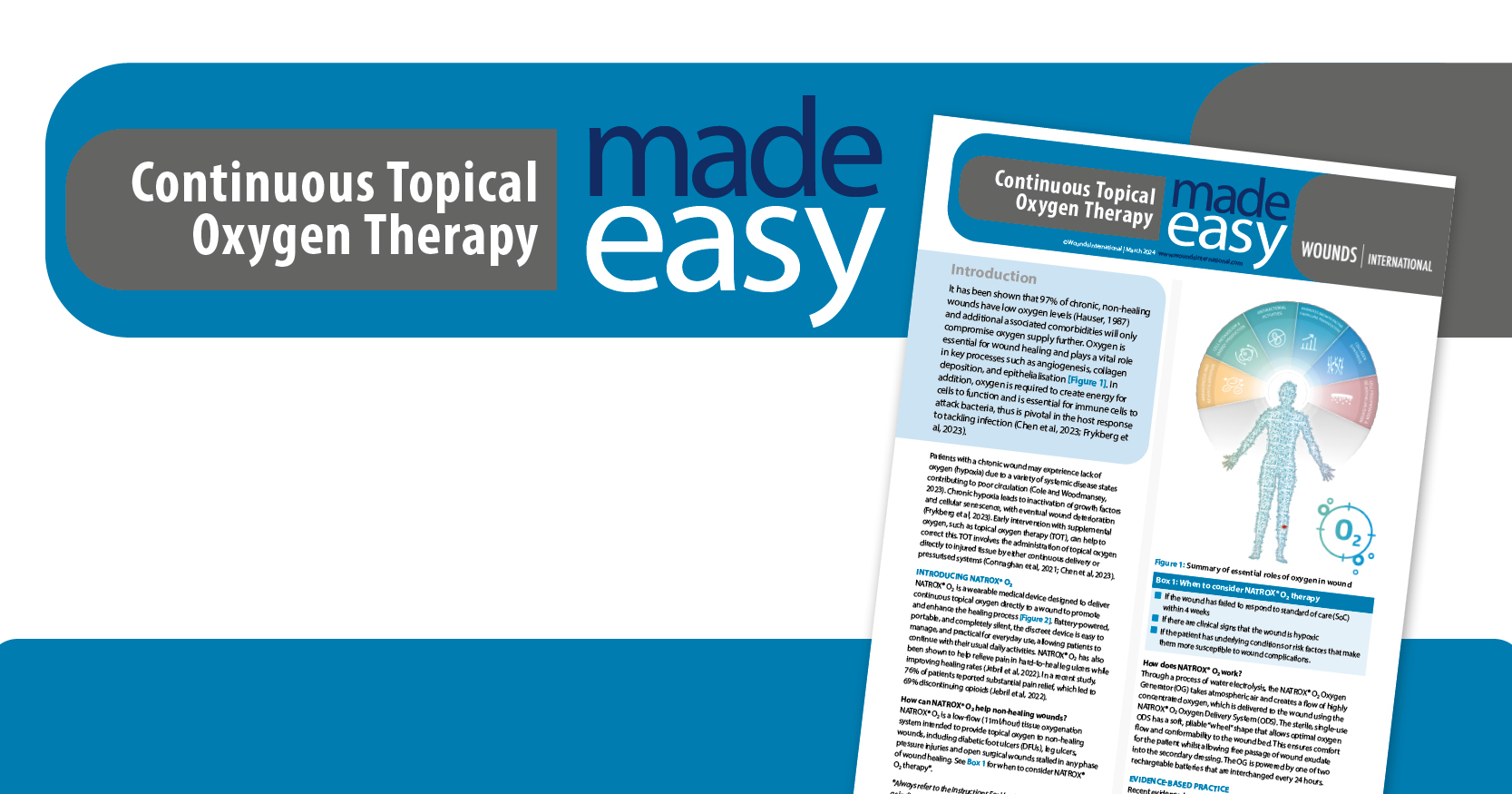The 3M™ Snap™ Therapy System is a mechanically powered, single-use, disposable negative pressure wound therapy (dNPWT) system that uses constant force springs, rather than electrical power, to generate an even and continuous level of negative pressure (-125mmHg) at the wound site. The Snap Therapy System draws exudate and infectious material away from the wound into the cartridge (60ml or 150ml options); a proprietary technology gels the exudate for improved containment and easy monitoring through the viewing window.
The Snap Therapy System can be adapted to clinician and patient needs and has customisable components that are designed to help manage a wide range of wounds in a variety of difficult-to-treat areas. The system is available off-the-shelf and in various dressing options, such as the 3M™ Snap™ Bridge Dressing. The Snap™ Cartridge is available in three models, offering a choice of negative pressure settings between -75, -100 and -125mmHg for individual clinical scenarios.
The Snap Therapy System is indicated for removal of small amounts of exudate from chronic, acute, traumatic, subacute and dehisced wounds, ulcers (such as diabetic, venous, or pressure), surgically closed incisions, flaps and grafts.
Evidence supporting the Snap Therapy System
Two published randomised controlled trials have demonstrated that the Snap Therapy System has similar wound healing outcomes to traditionally powered NPWT (Armstrong et al, 2012; Marston et al, 2015).
In a prospective observational and retrospective match-controlled study on patients with lower extremity venous or diabetic ulcers, Lerman et al (2010) demonstrated that patients using the Snap Therapy System with skin substitutes or skin grafts healed in a significantly shorter average time with a 50% absolute reduction in healing time versus modern dressings protocols that included a bilayered bioengineered skin substitute, a gel containing becaplermin and skin grafting. This study suggests that the Snap Therapy System may be a useful addition to the techniques available to clinicians working in wound care.
For patients with an acute or chronic wound, the Snap Therapy System is flexible, customisable and aims to maintain and preserve patient quality of life due to its discreet, lightweight and quiet design (Armstrong et al, 2012). It is suitable for active patients, older patients and patients and/or their carers who want to actively engage in shared care.
It is recommended that Snap Therapy System Dressings are changed at least twice a week, although this depends on the judgement of the clinician. Dressing Kits feature a proprietary, thin hydrocolloid dressing that may provide periwound protection and easy removal, while assisting with maintaining a seal and reducing periwound maceration (Marston et al, 2015) and can be applied in under 10 minutes (Armstrong et al, 2012).
Based on a model that analysed the costs and effectiveness of the treatment of diabetic lower-extremity wounds, Hutton and Sheehan (2011) reported that the Snap Therapy System saved over USD$9,000 per wound treated by avoiding longer treatment times and costs for complications and healing more wounds compared to modern wound dressings.







